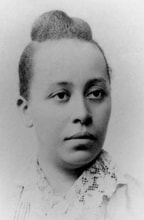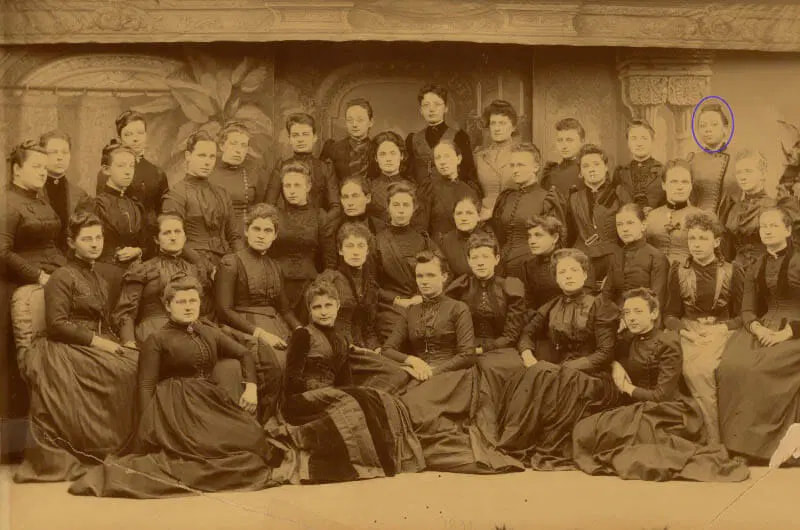Halle Tanner was born in Pittsburgh in 1864 to a prominent Black family. Her father, Benjamin Tucker Tanner, was a Methodist Episcopal (AME) minister and eventual bishop. Her brother Henry Ossawa was a well-regarded painter of dramatic Biblical scenes. He eventually moved to Paris and his paintings are displayed in some of the most prestigious museums in America.
 Halle Tanner Dillon [Changing the Face of Medicine]
Halle Tanner Dillon [Changing the Face of Medicine] In June 1886, Halle married Charles E. Dillon and the couple had a daughter named Sadie. However, Charles died suddenly and Halle and Sadie returned to her parents’ home. A young widow at 24, Halle decided to become a doctor and entered the Women’s Medical College of Pennsylvania.
After three years of study Halle received her M.D. in 1891; she was the only Black person in her class of 36. Shortly after graduating, Halle learned from the dean of her school that Booker T. Washington was struggling to find a doctor to teach at the Tuskegee Institute (now Tuskegee University) and to serve the surrounding community. Washington traveled to Philadelphia to meet Halle and her father and she accepted the position, which paid $600 a month.
Halle moved to Tuskegee in August, but she had to pass the Alabama State Medical Examination before she could practice at the Institute. The examination took several days and consisted of hundreds of questions, but the greatest challenge of all was that Halle would be questioned by an all-white examination board during the Jim Crow era.
Washington perceived that the examination would be daunting and arranged for Halle to study with Cornelius Nathaniel Dorsette. Dr. Dorsette was the first licensed Black physician in Alabama, where he practiced in Montgomery. After her brief period of preparation, Halle sat for the 8-day examination, and some southern newspapers scoffed at the idea of her successfully passing the test.
Halle was questioned on a different subject each day of the examination, and Peter Bryce, the superintendent of the Alabama Insane Hospital, tested her on medical jurisprudence. George A. Ketchum, Dean of the Medical College of Alabama and a founder of the Medical Association of the State of Alabama (MASA), questioned Halle about natural history and diagnosis of diseases. She was also examined by James T. Searcy, who became superintendent of the Alabama Insane Asylum after Bryce’s demise.
Against all odds, Halle passed the grueling examination. She impressed the members of the board so much that her accomplishment was noted in the official MASA journal and her success was even noted in the New York Times. Halle was officially the first woman physician in the state of Alabama.
Halle served at the Tuskegee Institute for three years. Along with teaching twice a day, she was responsible for the health care of the school's 450 students and 30 faculty and staff. She founded a training school for nurses and also created the Lafayette Dispensary to serve local residents. She also tended to private patients and often prepared her own medicines.
In 1894, Halle married Rev. John Quincy Johnson, a minister and math instructor at Tuskegee, and her time at the Institute came to an end. The couple moved frequently, from South Carolina to Connecticut, Georgia, New Jersey, then finally Nashville, Tennessee as Johnson pursued degrees in theology. The couple had three sons, but unfortunately, Halle died of childbirth complications in 1901 at the age of 37.
Halle Turner Dillon Johnson will be remembered for her contributions to the Tuskegee Institute and for her remarkable feat of becoming the first woman qualified to practice medicine in Alabama. Her hand-written medical certification exam can be viewed at the Alabama Department of Archives and History in Montgomery.
Additional resources
About the author


 RSS Feed
RSS Feed